Water is ubiquitous in Georgetown. There is a drain outside every house, flowing towards a canal. Old photos show the beauty of the waterways that comprised the original drainage system for the city.
Guyana sits on what was once known as the “wild coast” of South America. The area was a dangerous swamp that struck terror in the hearts of European adventurers seeking the fabled city of El Dorado. Even Sir Walter Raleigh is rumoured to have come here in search of gold. The name “Guiana” is said to come from an Amerindian word meaning “land of many waters”. Like many myths, it is charming but unsupported by evidence. Water is, however, a dominant motif of Guyana and certainly of Georgetown, the capital city. Water is also likely to end Georgetown’s existence before the 21st century comes to a close.
You cannot get away from water in Georgetown. There is a drain outside every house. It feeds into a trench that at some point flows into a canal. Old photos show the beauty of the waterways that comprised the original drainage system for the city. Georgetown is still crisscrossed by the canals, drains, and gutters that take storm-water from the roads and gardens and sends it to the sea. When the tide is in, the kokers (sluices) are closed. When the tide is out, the kokers are opened, and the water rushes out.
That is the theory. In reality, this superbly designed drainage system is blocked by selfish residents and greedy irresponsible businesses who dump garbage indiscriminately. Very quickly the bottles, tins, Styrofoam boxes, plastic bags, and other debris end up in the canals and drains. Blocked waterways cannot do their job. In 2005 Georgetown suffered one of the worst floods ever, resulting in millions of dollars of damage. There have been other less destructive but still costly floods. In 2014, as the floodwaters entered my house, I disconsolately watched the fish swimming in my study. The charm of their appearance was more than outweighed by the loss of books.
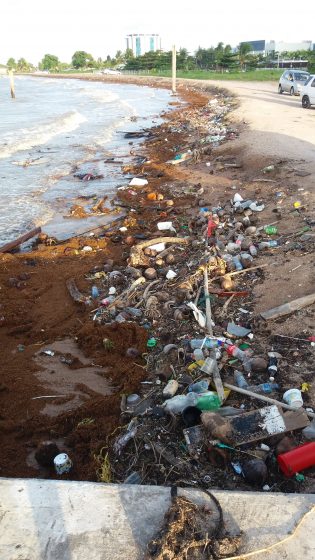
The lesson has not been learned. The ever-increasing mounds of plastic bottles dumped around the city continue to surge out to join the hundreds of millions of tons of plastic waste that are killing the oceans. The private sector, consumers, schools, churches, the Mayor and City Council mutter about garbage from time to time but continue to buy and dump the products that make up that same garbage—a sort of national cognitive dissonance.
In February 2017 the government introduced an environmental levy of $10 (US$5cents) on “every non-returnable unit of metal, plastic or glass container of any alcoholic or non-alcoholic beverage or water, whether imported, locally manufactured or produced in Guyana.” One year later, this levy had produced G$1.2Bn (US$6M). That means 120,000,000 non-returnable bottles or approximately 160 per person in Guyana’s small population of 750,000. Sadly, the levy appears to be more of a revenue-raising exercise for the government rather than a mechanism to restore and protect the environment. The money is not spent on ending environmentally damaging waste and there is still no environmental plan for Georgetown.
The drain outside my house is concrete and connects at right angles with the larger drain in the alleyway.
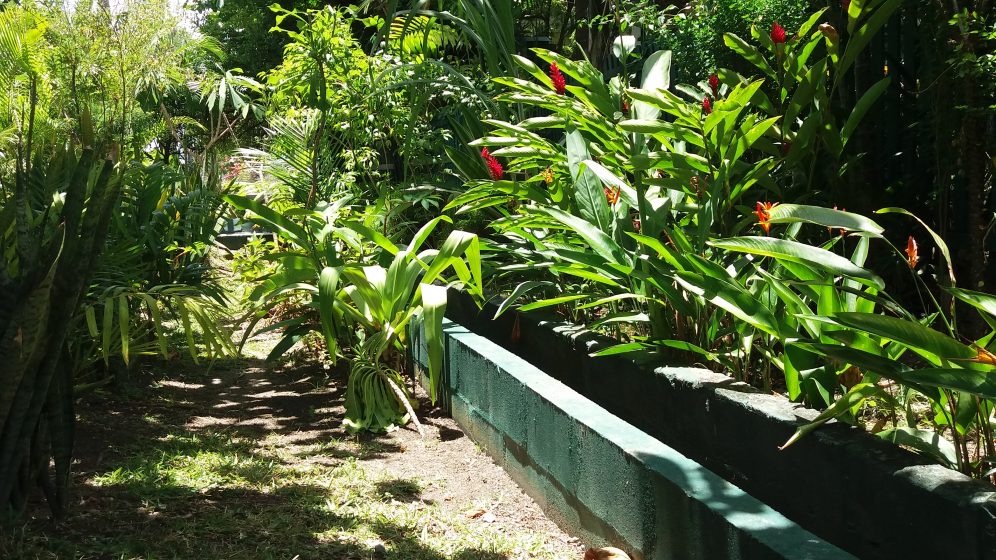
These drains are full of treasures—tadpoles, frogs, fishes, snails, and strange mossy plants. One of the great joys of the afternoon is to watch the little water snakes chasing and eating fish. We pick them up and admire them, before putting them back to finish their dinner. They coil around the wrist like blue and yellow braided bracelets. I have no idea what species these snakes are or even if my memory of the colours is accurate. The fish are still here, but I have not seen the snakes for several months now. One of the hardest things to do is to stop Georgetown folk from killing snakes.
The fish in my drain are small—a few centimetres—although there is the occasional excitement of a big tilapia about 15 centimetres in length.
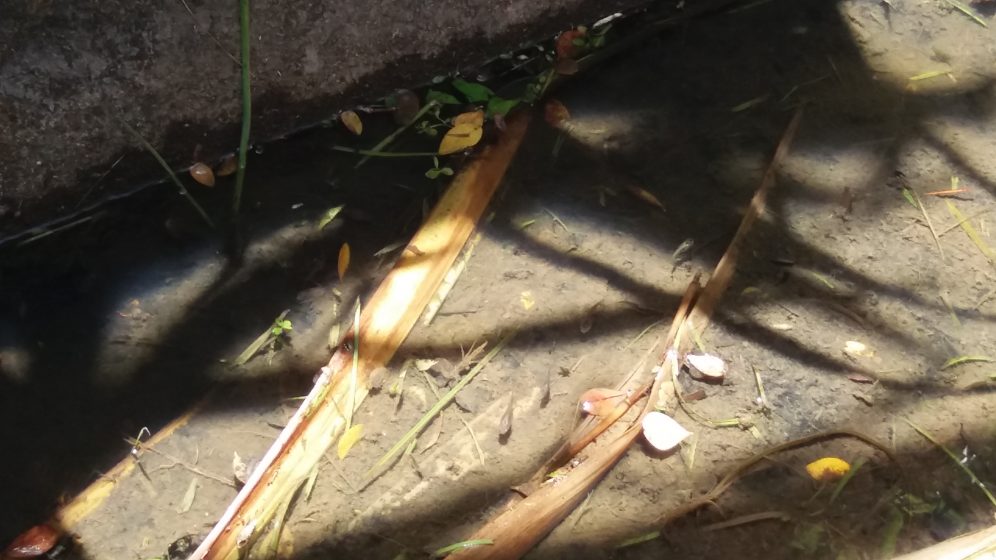
You see the odd person fishing in the canals and sometimes catching enough for a meal. Small boys sometimes swim in the cleaner parts of the trenches. On rare occasions, an eel might appear briefly. I once grabbed one and found out for myself why “as slippery as an eel” is so apt. The abundance of freshwater, even when choked with filth, somehow still supports a range of wild birds—snail kites, kingfishers, limpkins, and various herons that eat the snails and fish as well as the other 200 or so bird species that have to drink it.
The waterways are also places of extraordinary beauty and a good place to see the glorious lotus lily. The flower is a rich pink, and the scent is heady and overpowering if you can get close enough without tumbling in. Trench edges are notoriously treacherous.
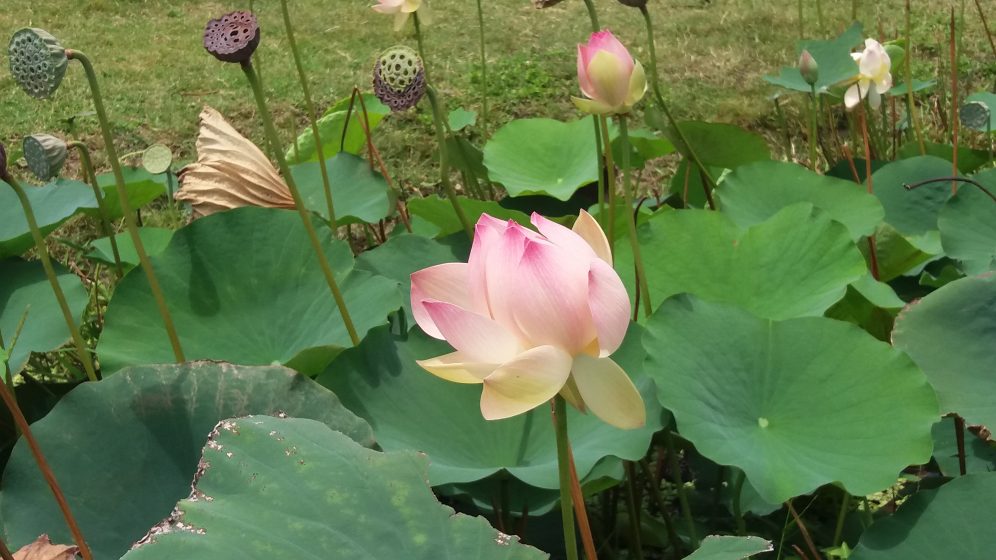
Although the lotus does impede drainage, it can help to create a healthy environment by removing pollution such as heavy metals. The lotus also has cultural and religious significance. It is sacred to Hindus and Buddhists. Eating on lotus leaves is an old custom that was brought to Guyana by indentured Indians. At religious festivals vegetarian curry is served on these leaves and eaten by hand. There is a knack to it that stops everything from sliding into your lap. Times change and now more and more people are using plastic plates and Styrofoam boxes instead of the biodegradable leaves. It is supposed to be more ‘developed.’ Inevitably the plastic and Styrofoam end up in the drains and trenches and block the waterways and outfalls. More than twenty years I wrote the law which says that, “Any person who throws down, abandons, drops or otherwise deposits or leaves anything in any manner whatsoever in circumstances as to cause, or contribute to, or tend to lead to litter shall be guilty of an offence.” All that is needed is a little political commitment and enforcement by the police and Environmental Protection Agency.
To the north, the beauty of Georgetown stops abruptly at a concrete wall. Behind it is the mighty Atlantic Ocean. If you want to see the sea, you do not walk down to a beach; you climb up the sea-wall and look out. Georgetown lies about 6 feet below sea-level. The second surprise is the colour of the water—not the sparkling blue as in the Caribbean – but a rich brown thanks to the silt and soil from three great rivers, Brazil’s Amazon, Venezuela’s Orinoco and Guyana’s largest river, the Essequibo.
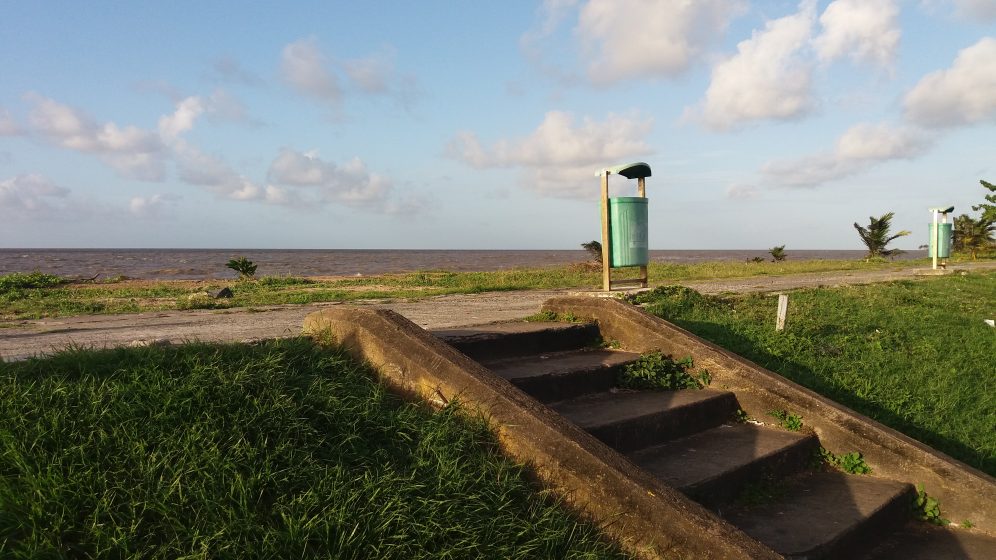
The foreshore changes over time. Erosion takes away the beach. Accretion dumps coastal sediment and re-creates land. I remember as a child picking up shells on a sandy beach beyond the sea-wall and watching the crabs scuttling into their holes. There were little pools that smelled of the sea and small rubbery flowers. The beach used to have low bushes that provided natural protection against the force of the waves.
All of these have gone. The sea-defences at this point are just a hideous concrete structure devoid of wildlife. Now and then the four-eyed fish come in with the waves and peep about at the edge of the concrete. These extraordinary creatures have eyes that are divided so they can see above the water and in the water at the same time.
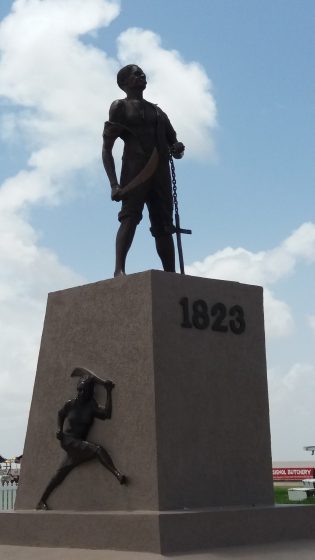
The seawall has always been a place for Georgetown residents to come, sit and “take the breeze”. The air is salty and smells of the sea. Children run around. Couples court. The city feels small and self-important when you contemplate the vast stretch of ocean. Somewhere out there is Africa. The ships bringing enslaved Africans would come in near here. It is a terrible thought that so much of this city’s wealth was first created by men and women in chains. Enslaved Africans were subjected to the most brutal, life-denying conditions—flogging, mutilation and hanging for trivial offences—and yet they continued to resist. Quamina Street in the heart of the city is named after one of the leaders of the Demerara Rebellion of 1823. And by the sea-wall is a monument to this same rebellion. A dignified figure stands tall on the plinth and gazes into the distance.
Is he seeing his African homeland? I hope so. Below is an enslaved African woman emerging from the stone. History, culture, and water run together all over Georgetown.
Increasingly nature is seen as a bit of an embarrassment, a sort of old-fashioned thing. Bright lights nearby have destroyed the black and silver splendour of the night. The womb-like shushing of the Atlantic waves can no longer be heard. On Sunday nights big speakers pump out music that sounds like a dead monotonous beat accompanied by demented screaming. It is an assault on the senses and a destruction of Georgetown’s seawall tradition.
It is possible to walk westwards along the seawall passing the lovely old wrought iron bandstand, and the relatively new Marriot Hotel, an architectural monstrosity built with public money and imported Chinese labour. The city’s western border is of course water. Having successfully, for now at least, defied the Atlantic Ocean, Georgetown gives the illusion of slipping into the Demerara River with the golden pink sunset. The land ends abruptly. A groyne takes some of the force of the waves coming in from the Atlantic. It is a dangerous spot and people have drowned here.
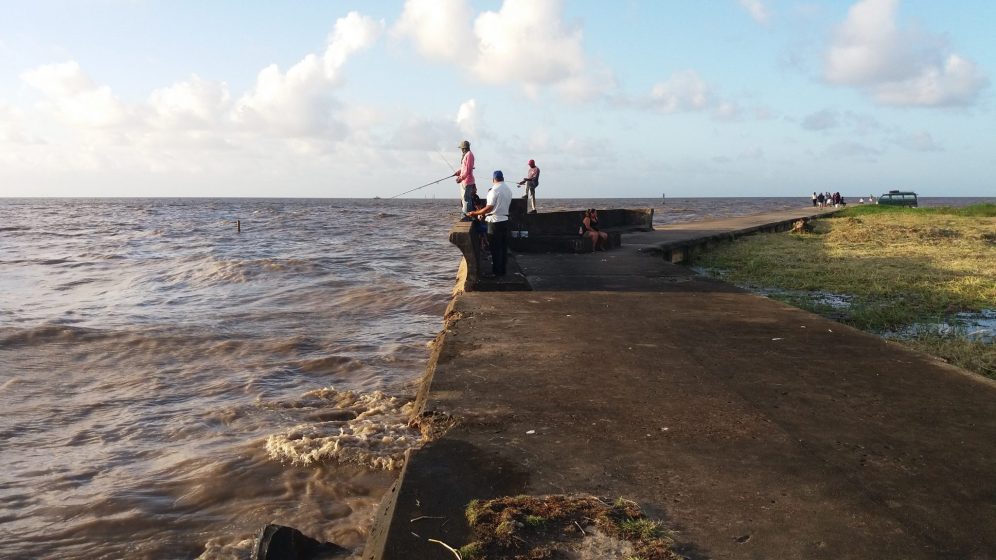
The Demerara is a much smaller river than the Essequibo, only about a mile wide. This is the country’s main port, and ships come in here, laden with imported consumer goods, including plastic bottles of water from Trinidad, which possibly end up back in Trinidad via ocean currents.
The riverside waterfront is taken up with docks and wharves for the shipping industry until the organic chaos that is the Stabroek Market—fish, fresh fruit and vegetables, meat, spices, medicine even gold—there is something for everybody in Stabroek Market. But it is dirty. The river side of the market is full of the inevitable plastic bottles and garbage. There is absolutely no respect for the river as an ecosystem. The scarlet ibis have wisely fled further south. The other large market—Bourda—is further east near the canals along Church street and North road. It is a favourite spot for this heron to fish.
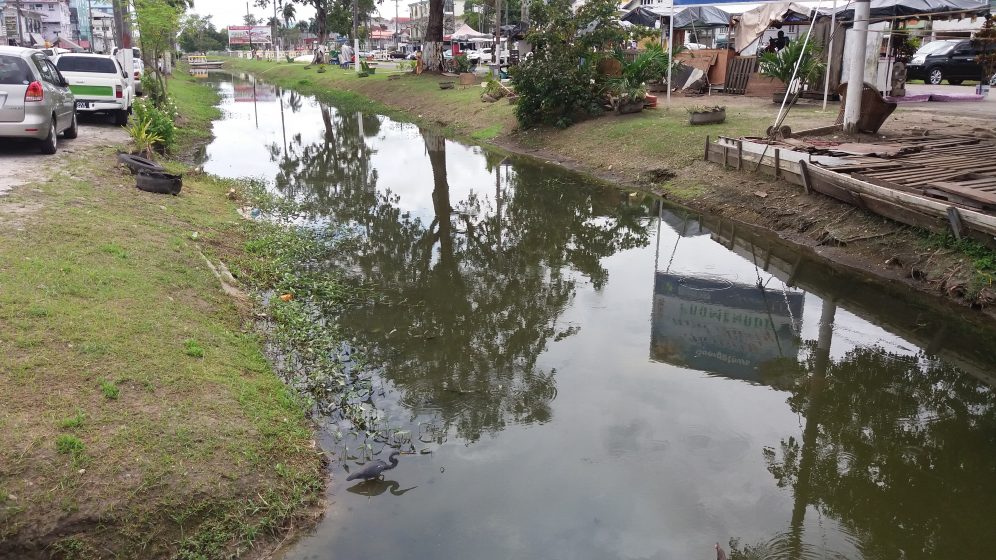
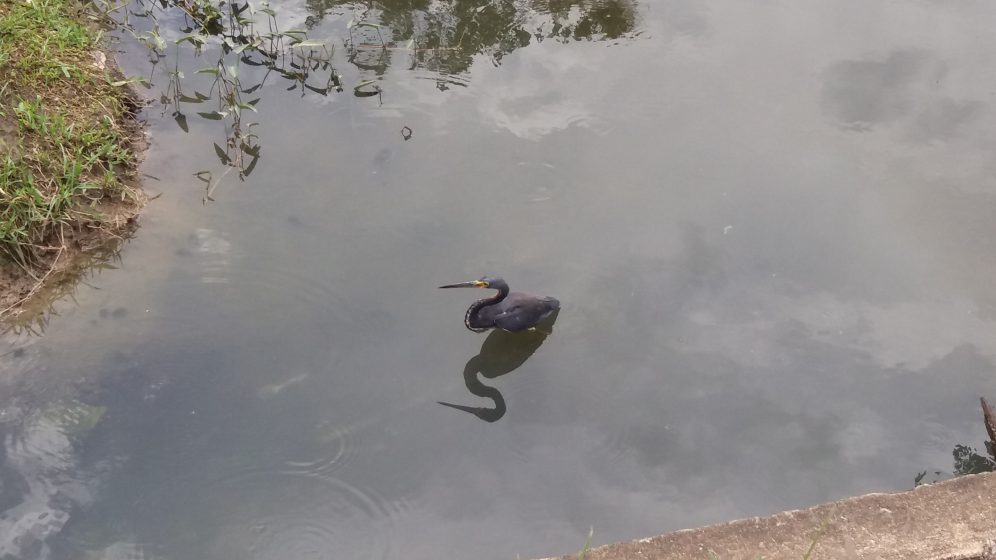
A little further along is perhaps the most beautiful waterway of all—the bit that meanders through the zoo and Botanic Gardens. Manatees have lived in this system of ponds for as long as I can remember. There are also small spectacled caiman. It is incredible to think that this kind of wildlife is relatively free to roam in a city. The rest of the manatees are in the National Park, not far from the seawall.
Georgetown cannot escape the sea. 120 miles out, Esso Exploration and Petroleum Guyana Ltd, a Bahamas subsidiary of ExxonMobil has announced a massive oil discovery of over 3 billion barrels of oil. Along with two other companies Hess Exploration Guyana Ltd, a Cayman Islands company, and CNOOC Nexen Guyana Production Ltd, registered in Barbados, Esso has a licence to extract oil. The oil deal is hugely controversial not least because of the favourable terms to the oil companies and the doubts about what Guyana will get.
There is also concern about oil pollution and for the environment in general as well as a legal challenge and international concern Guyana’s oil will contribute to climate change and therefore to rising sea levels. For a country whose capital city is below sea-level this seems a self-defeating course of action, especially as Georgetown is particularly vulnerable. At one time Guyana had the highest suicide rate in the world. Now, it almost seems as if the capital city is getting ready to commit slow suicide by drowning. But it doesn’t have to end like that. Other cities are fighting back. New York and San Francisco are suing the oil companies for harm from climate change. Arnold Schwarzenegger even wants to go after them for murder.
Georgetown’s Mayor and City Council and the central government appear to have little or no understanding of climate change (and other threats to humanity) despite the second warning to humanity from thousands of scientists. Georgetown is running out of time and desperately needs new visionary leadership and citizens who love their capital city. Perhaps the time has come for young people to take over, to enforce their constitutional right to inter-generational equity, to demand a fossil fuel free economy, to insist on an immediate and total ban on plastic and Styrofoam, and to work together to restore the city’s waterways and infrastructure, not just to hold back the sea but to create a healthy environment with a zero-carbon footprint.
Like London, Georgetown could even become a national park city. As Martin Carter, Guyana’s best loved poet wrote, “I do not sleep to dream, but dream to change the world.”
Melinda Janki
Georgetown


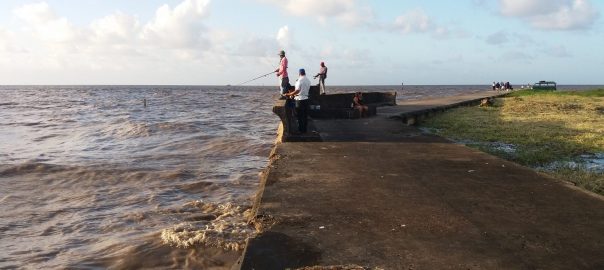


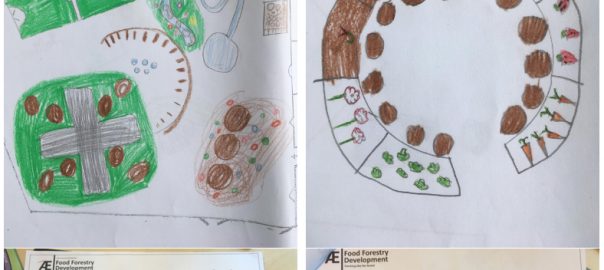

Leave a Reply